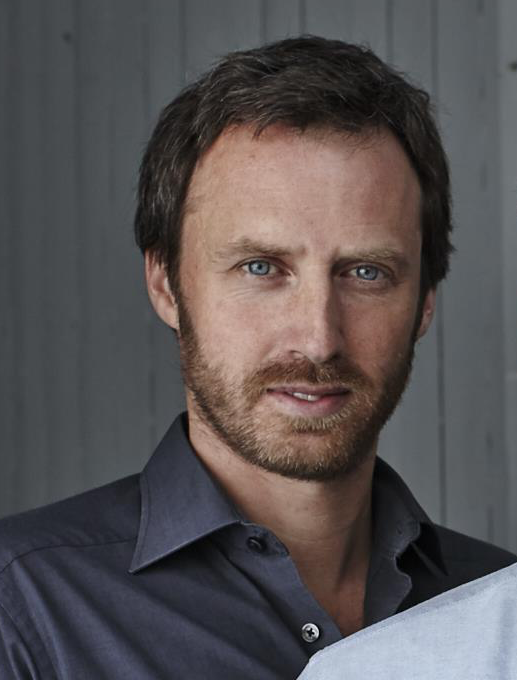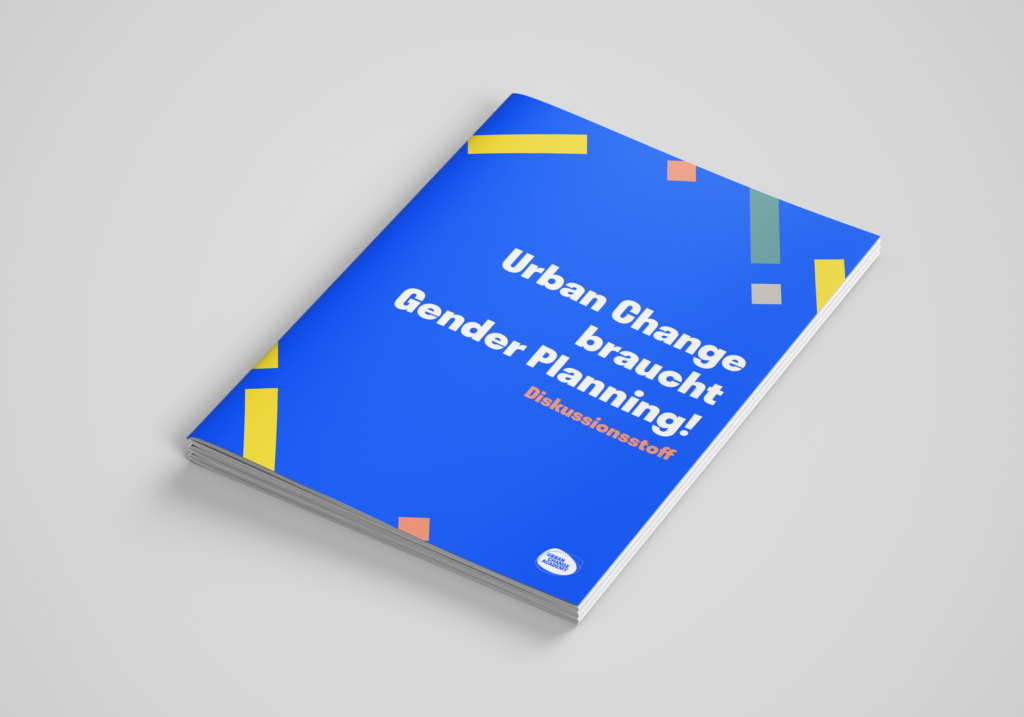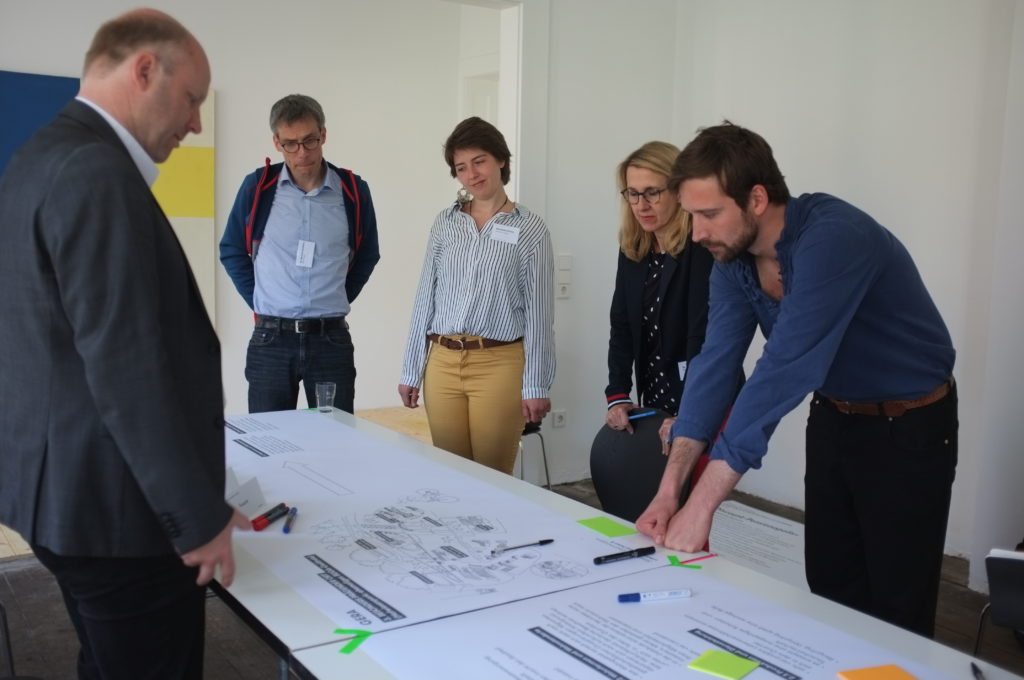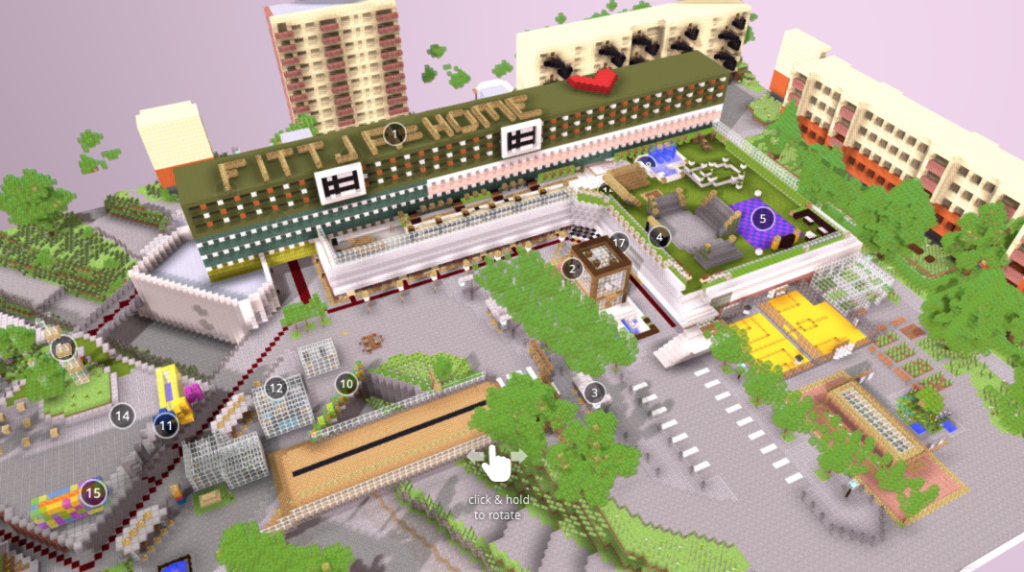The interview with Jens Wille took place on 16.12.2020 – the second hard lockdown in Germany was here. Due to the exponentially rising numbers of infections again and the increasingly highly critical situation in hospitals, public life was being radically shut down to prevent further escalations in the infection rate.
What role has data played in the Covid crisis?
Jens Wille: There are many insights in data. We have conducted mobility analyses at Ubilabs, which we can use to see how quickly mobility behaviour has changed in the lockdown. In other projects, too, a wide variety of data sources were analysed anonymously, and we asked: Where are the cycling routes located? How is the volume of traffic distributed throughout the city during the day? In my opinion, more could be done in this respect. It would also be interesting, for example, to evaluate location histories. By donating data, we could retrospectively analyse the impact of a pop-up cycle path, for example. Do people really change their mobility habits? The change in the modal split, i.e. which means of transport are used, could also be analysed over time. These are pure data topics. In addition, there is also a need for a qualitative, emotional level of data – for example by annotating the recorded routes. As a cyclist, you often come across poorly constructed cycle paths that suddenly end in the middle of nowhere or are parked in certain places. In order to enrich data with such important information, we have to find a suitable access.
Data is a good keyword. At Ubilabs you deal a lot with map applications.
What do you think of the discussion about location-based personal data and the tracking of infection chains?
When it comes to your personal location history, it’s clear that this is a highly individual treasure trove of data that you wouldn’t want to share with anyone else. Even if the data is anonymised, the movement patterns allow conclusions to be drawn about the person. Nevertheless, we know how dramatic the whole Covid situation is and how crucial it is to trace the chains of infection. My guess is that many people would provide the past two weeks of their location history or give this information manually. Nevertheless, we notice how big the hurdles are to introducing such solutions in the health sector. At the moment, they are having a hard time with perspective questions because they have their hands full.
My hope is that the post–Covid city will lead to a true smart city that offers a high quality of life and offers a variety of sharing services.
One thing is clear – the workload of those in the health services must be reduced. In order to make this possible, we have developed a tool for the Federal Ministry of Health together with the Medical University of Hanover, with which those people infected with Covid can make their location history available or enter it manually in order to achieve a fast and structured recording of locations and contact persons.
What challenges do you see there?
What should be done in the future to be better prepared for the next pandemic?
Federalism means that we have 400 public health offices in Germany, which are set up very differently – there is no one software for German public health offices, each office has its own methodology for establishing infection chains. With the uniform software platform SORMAS and a location tool anchored in it, the data can be collected in a structured way and processed immediately. At the moment, the data is not collected in a uniform format, so that you could overlay all the movement profiles and analyse where people meet – it’s a bit more simplified than that. But work is being done on that. There are currently efforts to equip 90 per cent of the public health offices with a SORMAS that is open to expansion. That is a hope. But of course, the question is justified: Why hasn’t this been thought of before?
With a view to the post-Covid city: What potential do you see in mobility analyses? What else could be developed from it?
Public transport is now faced with the question: How is mobility behaviour changing in our city? What insights can we draw from all the data available – from passenger counts in the S-Bahn to subscription models and ticket sales at vending machines, to the question of where which tickets are bought and when, and how does this correlate with the connection information? This data could be made available to a wide variety of users and supplemented by shared mobility data to obtain as holistic a picture as possible of usage habits and to derive measures from it. Hamburg’s Hochbahn is already making good progress with the hvv-switch app. The point is to keep a constant eye on things: Where are the tickets being used? How are special offers being accepted? How do we have to adapt the offer to make it more interesting? What else can we offer to help people avoid peak times on public transport? That’s where we are , still at the very beginning. Instead of conducting a passenger survey every two years, measures like these can help us get a real-time look at mobility data and make decisions based on that.
We have to prevent commuter traffic from increasing so much. For this, we urgently need more intelligence in all commuter planning. This is a big challenge, and I hope it will be a big enough challenge, that technologies can create real added value.
Jens Wille, co-founder of Ubilabs
My hope is that the post-Covid city will lead to a true smart city that offers a high quality of life and a variety of sharing services.
Due to the pandemic, many areas in the city have had to be restricted.
What technological solutions can help us make better use of limited capacities in the future?
We have already discussed this topic with many major event organisers. How can we equalise traffic at all kinds of events – from concerts to football matches? We call it safe routing. How can we divide the admission to events into time slots and give people a concrete movement time frame? Through the routing requests in the navigation, we can already calculate quite precisely who will be where and when. On this basis, we can direct visitors before they arrive at the concert hall or stadium: “You don’t have to leave yet. You’ll also have enough time if you take the underground three minutes later because your time slot doesn’t start until 5.30 pm.” This way we can avoid people arriving all at once.
The pandemic has exacerbated existing social inequalities. Can interactive map applications be a solution to this as well?
I think it is important to create transparency with regards to the SDGs (Sustainable Development Goals) of the UN. The 17 goals relate to homelessness, poverty, education, and water quality, among other things. Many of the SDGs are related to maps. Aside from the topic of transport, one could also look at city districts using certain questions, such as: What are the socio-demographic conditions there? How can this be depicted on maps? In this way we can review: What is a city doing to contribute to the SDGs? In this way, we can demonstrate to the citizens: Where are we right now? What is going wrong in this city? What can we do to achieve the goals? What are the steps we need to take to get there? I believe that the more visibility you create for this, the greater the willingness there is to fight for it. This could become a standard for urban planning.
For example, we developed a vacancy indicator together with the Gängeviertel a few years ago. It is a map on which anyone in the city can enter vacancies in the city: “There are three empty flats next to me in my house.” At the time, there was a big discussion about how district councils could oblige owners to rent out the flat or impose penalties if they did not. This issue of visibility was totally essential. Within a very short time, more than 1000 places were registered in Hamburg; soon more than 35 cities were using the platform. This gives the topic of data collection or crowdsourcing a whole new meaning, which I find very important.
An important point in my eyes is the use of technologies and the commitment of companies: What are the possibilities to shape the “urban change” – and who are the right the right partners for this? Tools and feedback are an exciting topic in this context. I can well imagine providing city dwellers with new new tools for them to enter into a dialogue with the city.
Jens Wille, co-founder of Ubilabs
How has the pandemic changed our view of the future as a society?
I think that urban-rural relationships will become more relevant. How can shared mobility services also help to reduce or bundle commuter flows in the surrounding areas? The whole issue of Empty Seats Travelling: How do we manage – even if this may be difficult from a Covid point of view – to occupy more seats in a car? We have to prevent commuter traffic from increasing so much. For this, we urgently need more intelligence in all commuter planning. This is a big challenge, and I hope it will be a big enough challenge, that technologies can create real added value.
At the motorway exits around Hamburg there are often commuter car parks where people congregate. Everyone drives to this car park in their cars and then continues their journey in one car, which is already a great step forward. I have no idea how well this is organised. What possibilities are there for rethinking these classic car-sharing or commuter exchanges through technology?
What do you think an Urban Change Academy needs? What skills should it teach?
You should definitely pick up, listen to and understand the different stakeholders. What is the biggest challenge they’re facing at the moment? What is the situation on the ground? In my view, this is an essential point of departure for every successful project.
I also find the exchange of experience important. In this respect, I think it’s a great idea if an academy like this can contribute to creating more networking among the individ- ual actors and report on what they would do differently next time. Or, to present each other’s projects live on site, to make it possible for everyone to experience them. And I think it’s an exciting idea to enter into a discussion at this point. And also, to bring together very different user groups. I would like an academy to present new, controversial projects, ideas, and business models for discussion and get early feedback from all stakeholders, with whom ideally it should establish direct communication. In my view, this is a platform that can be of great value for cities and their inhabitants.
What topics would excite you?
Everything around data, data analysis and data strategies. And how the various stakeholders in a city can gain new insights from data in order to make better decisions. An important point in my eyes is the use of technologies and the engagement of companies: What opportunities are there to shape urban change – and who are the right partners to do so? Tools and feedback are an exciting topic in this context. I can well imagine giving city dwellers new tools to enter into dialogue with the city: Where can I contribute my ideas? Where can I give positive feedback on a measure? Who can I tell about how happy I am about this pop-up cycle path in Max Brauer Allee? The pop-up cycle path is lacking the feedback channel. I would like to see more dialogue in the future.
Thank you very much.




